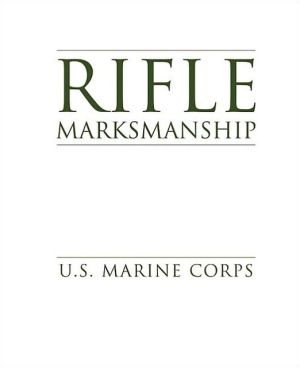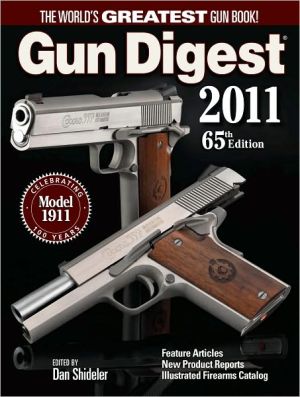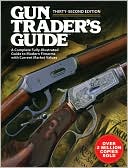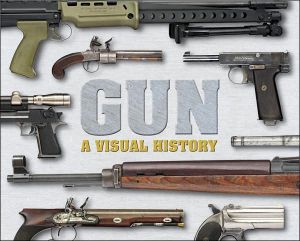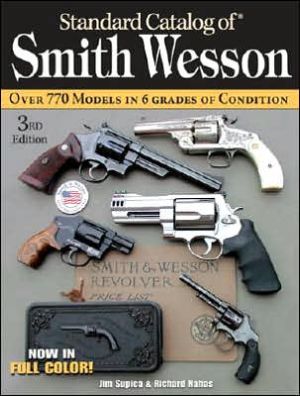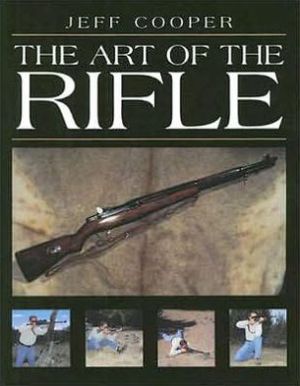Rifle Marksmanship
During U.S. military operations, the Marine rifleman is among the first to confront the enemy and the last to hang his weapon on the rack after the conflict is won. That is why U.S. Marines have the reputation as the finest combat riflemen in the world. Now, you can learn their secrets. \ This manual is the very latest Marine doctrine on the art and science of shooting effectively in battle. Its 10 chapters teach the versatility, flexibility and skills needed to deal with a situation at any...
Search in google:
During U.S. military operations, the Marine rifleman is among the first to confront the enemy and the last to hang his weapon on the rack after the conflict is won. That is why U.S. Marines have the reputation as the finest combat riflemen in the world. Now, you can learn their secrets. This manual is the very latest Marine doctrine on the art and science of shooting effectively in battle. Its 10 chapters teach the versatility, flexibility and skills needed to deal with a situation at any level of intensity across the entire range of military operations. Topics covered include the proper combat mind-set; cleaning your rifle under all weather conditions; rifle handling and marksmanship the Marine way; engaging targets from behind cover; obtaining a battlefield zero; engaging immediate threat, multiple and moving targets; shooting at night and at unknown distances; and much more.
Chapter 1. Introduction to Rifle Marksmanship Role of the Marine Rifleman Conditions Affecting Marksmanship in Combat Combat Mindset Physical Preparation Mental Preparation Chapter 2. Introduction to the M15A2 Service Rifle Description Operational Controls Selector Lever Magazine Release Button Charging Handle Bolt Catch Cycle of Operation Firing Unlocking Extracting Ejecting Cocking Feeding Chambering Locking Ammunition M193 Ball M855 Ball M196 and M856 Tracer M199 Dummy M200 Blank Preventive Maintenance Main Group Disassembly Magazine Disassembly Cleaning Inspection Lubrication Reassembly Function Check User Serviceability Inspection Field Maintenance Cleaning the Rifle in Various Conditions Hot, Wet Tropical Hot, Dry Desert Arctic or Low Temperature Heavy Rain and Fording Chapter 3. Weapons Handling Safety Rules Weapons Condition Determining a Weapon's Condition (Chamber Check) Weapons Commands Loading the Rifle Making the Rifle Ready Fire Cease-Fire Unloading the Rifle Unloading and Showing the Rifle Clear Filling, Stowing, and Withdrawing Magazines Filling in Magazine with Loose Rounds Filling the Magazine Using a 10-round Stripper Clip and Magazine Filler Stowing Magazines Withdrawing Magazines Reloading the Rifle Principles of Reloading Condition 1 Reload Dry Reload Remedial Action Observe for Indicators Audible Pop or Reduced Recoil Weapons Carries Tactical Carry Alert Carry Ready Carry Weapons Transports Strong Side Sling Arms Transport (Muzzle Up) Weak Side sling Arms Transport (Muzzle Down) Cross Body Sling Arms Transport Transferring the Rifle Show Clear Transfer Condition Unknown Transfer Clearing Barrel Procedures Purpose of a Clearing Barrel Procedures for "Load" Procedures for "Make Ready" Procedures for "Unload" Procedures for "Unload and Show Clear" Chapter 4. Fundamentals of Marksmanship Aiming Sight Alignment Sight Picture Importance of Correct sight Alignment Factors Affecting Sight Alignment and Sight Picture Acquiring and Maintaining Sight Alignment and Sight Picture Size and Distance to the Target Breath Control Breath Control During Long-range or Precision Fire (Slow Fire) Breath Control During All Other Combat Situations Trigger Control Grip Trigger Finger Placement Types of Trigger Control Resetting the Trigger Follow-Through/Recovery Follow-Through Recovery Chapter 5. Rifle Firing Position Selecting a Firing Position Stability Mobility Observation of the Enemy Types and Uses of the Rifle Web Sling Hasty Sling Loop Sling Factors Common to All Shooting Positions Left Hand Rifle Butt in the Pocket of the Shoulder Grip of the Right Hand Right Elbow Stock Weld Breathing Muscular Tension/Relaxation Elements of a Good Shooting Position Bone Support Muscular Relaxation Natural Point of Arm Prone Position Application Assuming the Prone Position Straight Leg Prone Position with the Hasty Sling Straight Leg Prone Position with the Loop Sling Cocked Leg Prone Position with the Hasty Sling Cocked Leg Prone Position with the Loop Sling Sitting Position Crossed Ankle Sitting Position with the Hasty Sling Crossed Ankle Sitting Position with the Loop Sling Crossed Leg Sitting Position with the Hasty Sling Crossed Leg Sitting Position with the Loop Sling Open Leg sitting Position with the Hasty Sling Open Leg sitting Position with the Loop Sling Kneeling Position Description Assuming the Kneeling Position High Kneeling Position with the Hasty Sling High Kneeling Position with the Loop Sling Medium Kneeling Position Low Kneeling Position Standing Position Description Standing Position with the Hasty Sling Standing Position with the Parade Sling Chapter 6. Use of Cover and Concealment Cover and Concealment Types of Cover Common cover Materials Firing From Specific Types of Cover Supported Firing Positions Considerations Using Cover and Concealment Seven Factors Types of Supported Positions Searching for and Engaging Targets From Behind Cover Pie Technique Rollout Technique Combining Techniques Moving Out From Behind Cover Chapter 7. Rifle Presentation Presentation of the Rifle Presenting the Rifle From the Tactical Carry Presenting the Rifle From the Alert Carry and From the Ready Carry Presenting the Rifle From the Strong Side Sling Arms Transport Presenting the Rifle From the Weak Side Sling Arms Transport Search and Assess Purpose Technique Searching and Assessing to a Higher Profile Chapter 8. Effects of Weather Physical Effects of Wind on the Bullet Physical Effects Determining Windage Adjustments to Offset Wind Effects Physical Effects of Temperature and Precipitation on the bullet and the Rifle Temperature Precipitation Physical and Psychological Effects of Weather on Marines Wind Temperature Precipitation Light Chapter 9. Zeroing Elements of Zeroing Line of Sight Aiming Point Centerline of Bore Trajectory Range Types of Zeros Battlesight Zero (BZO) Zero True Zero M16A2 Sighting System Front Sight Rear Sight Windage and Elevation Rules Front Sight Elevation Rule Rear Sight Elevation Rule Windage Rule Initial Sight Settings Front Sight Post Rear Sight Elevation Knob Windage Knob Zeroing Process Battlesight Zero Factors Causing a BZO to be Reconfirmed Maintenance Temperature Climate Ammunition Ground Elevation Uniform Factors Affecting the Accuracy of a BZO Chapter 10. Engagement Techniques Target Detection Target Indicators Identifying Target Location Maintaining Observation Remembering Target Location Range estimation Range Estimation Methods Factors Affecting Range Estimation Offset Aiming Point of Aim Technique Known Strike of the Round Techniques of Fire Two-Shot Technique Single Shot Technique Sustained Rate of Fire Three-Round Burst Technique Engaging Immediate Threat Targets Engaging Multiple Targets Prioritizing Targets Technique of Engagement Firing Position Engaging Moving Targets Types of Moving Targets Leads Engagement Methods Marksmanship Fundamentals Engaging Targets at Unknown Distances Hasty Sight Setting Point of Aim Technique Engaging Targets During Low Light and Darkness Night Vision Searching Methods Types of Illumination Effects of Illumination Engaging Targets while Wearing the Field Protective Mask Marksmanship Fundamentals Firing Position Appendices Data Book Data Book Recording Data Before Firing Recording Data During Firing Recording Data After Firing Glossary
